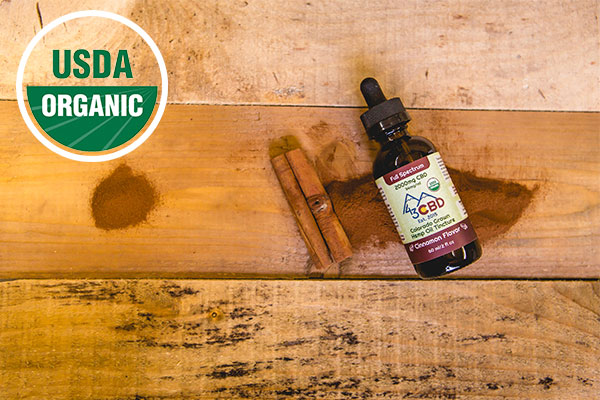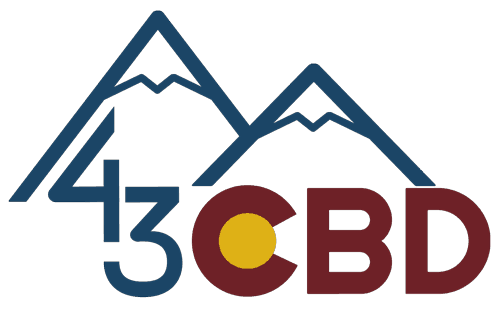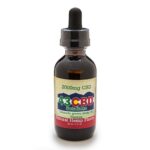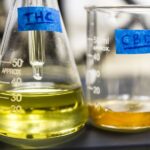
Finding CBD products “claiming” to be organic is so easy, you can do it with your eyes shut. In all seriousness, most CBD companies can’t put their money where their mouth is, and a majority of businesses that insist they’re using organic growing and harvesting practices can’t provide the official certification that proves they are truly organic.
This leaves us wondering why it’s so difficult to find USDA approved CBD products, and why it’s so easy to find the fake ones that only care about cashing in?
Today, we’re going to focus on the importance of the relationship between organic certification and hemp cultivation, and what it means for our consumers.
What Is USDA Organic CBD?

The United States 2018 Farm Bill that was passed a couple of years ago classified hemp as a legal crop, allowing it to become a USDA regulated product that can be tested to ensure the best quality and purity standards are being met.
But before we get too ahead of ourselves, let’s first go over the differences between hemp, cannabis, and marijuana to avoid any confusion.
Hemp
Hemp is a member of the same family as marijuana, however, hemp and marijuana are chemically and characteristically different from one another. Hemp is a specific type of cannabis known as Cannabis sativa L, which contains less than 0.3% THC (the cannabinoid responsible for psychoactivity) and high levels of CBD. Cannabis plants that contain more than 0.3% THC are legally classified as marijuana plants and are still considered a federally illegal drug under the U.S. Controlled Substances Act (CSA).
Unlike marijuana, hemp is 100% legal to buy, sell, and grow. In fact, hemp is incredibly versatile; it can be turned into beer, sunscreen, milk, shoes, rope, skincare products, clothes, soap, a durable construction material, paper, protein powder, diapers, fuel, and even sports cars!
Cannabis
Cannabis is the taxonomic term that references an entire genus of over 170 plants that include both marijuana and hemp. To clarify, both hemp and marijuana are considered to be cannabis plants; marijuana contains more than 0.3% THC and hemp contains less than 0.3% THC.
Marijuana
Marijuana is a species of cannabis that contains more than 0.3% THC — which is the cannabinoid responsible for getting users high and intoxicated when they smoke or eat it. While marijuana and hemp are related, they’re chemically and legally miles apart.
USDA Organic Regulations

The United States Department of Agriculture (USDA) was established in 1862 to provide public policy leadership on natural resources, food, agriculture, nutrition, and rural development based on the best science available. Organic foods weren’t standardized by the USDA until 2002, but it didn’t take long for them to move into the mainstream — by 2003 73% of grocery stores in the United States carried organic foods, and by the end of the decade they were up by 20 percent. Today, about 45% of American consumers buy organic foods regularly, and another 84% report purchasing them when they can.
Consumers hunt for organic foods and products because they’re better for the environment, they don’t contain genetically modified organisms (GMOs), pesticides, herbicides, hormones, or antibiotics, and they boast a better nutritional and flavor profile. To procure the official USDA Organic seal, food producers, manufacturers and farmers have to go through rigorous testing and are required to follow strict guidelines to maintain their status as an organically certified producer.
USDA Organic Certification Guidelines for CBD
Producing truly organic cannabidiol (CBD) products isn’t easy or for the faint of heart. It requires proving that the best possible standards are being used from seed to sale, and it demands that extremely detailed records must be kept. In fact, many CBD companies need to hire full-time staff to keep everything properly maintained.
Keeping that in mind, here are the guidelines organic CBD producers need to abide by to attain and keep their certified USDA status:
- The use of pesticides, herbicides, or synthetic fertilizers can’t be used on the soil or crops during the growing or harvesting phase.
- Growers are required to employ cultivation and tillage methods which limit soil erosion while protecting the overall quality of the soil.
- All seeds are required to be non-GMO certified.
- Growers are required to undergo a background check and surrender all sales records and lists of businesses they supply to.
- CBD producers are required to follow the USDA-approved extraction process guidelines.
- The final CBD product must be labeled and certified Organic by an authorized and certified USDA third-party auditor.
- All the product’s ingredients before and after preparation are required to be tested by the auditor to guarantee USDA guidelines are being met down the entire supply chain for each and every product.
- A yearly third-party audit is conducted in order to maintain organic certification status.
Is There A Difference Between All-Natural and Organic?

Unfortunately, many consumers don’t realize there is a huge distinction between the all-natural and organic product designations. There are even differences between organic designations as well. “100% organic” is exactly that. Every single ingredient and step in the production process is completely organic. Just “organic” labeling doesn’t guarantee it’s 100% organic and USDA certified; otherwise, it would be labeled as such. “Made With” organic isn’t a USDA certification either, it simply means 70% of the ingredients used are USDA certified organic — but since it isn’t 100% organic, it’s not eligible to don the official USDA seal.
In regards to “all-natural” labeled products, they’re not regulated, and they’re not subject to the same rigorous standards, testing, and scrutiny that 100% USDA organic products are. All-natural products won’t likely contain synthetic fertilizers, pesticides, herbicides, hormones, or antibiotics, but the ingredients used in them might.
Why Third-Party Testing Is So Important

The CBD industry has exploded over the past decade, and with that, shady snake oil salesmen looking to take advantage have slithered into the market. This is why third-party testing is so crucial for CBD companies to provide their consumers; they deserve to know what they’re spending their hard-earned money on. Imagine shelling over $100 for what you think is a safe and high-quality CBD oil, only to find it doesn’t even contain CBD and it’s riddled with toxic chemicals.
The only way to ensure you’re ingesting a clean CBD product is to check out their lab reports, and if they don’t provide them on their website — there’s a good chance the products weren’t tested at all. The lab test results should include details about any microbes, fertilizers, chemical residue, pesticides, herbicides, solvents, or heavy metals that are detected in each and every batch for each and every product sold. It should also detail what cannabinoids and terpenes are present, and in what amounts so buyers can be sure they’re using a legitimate CBD product.
Not only that, but CBD products that contain synthetic cannabinoids are shown to be extremely harmful to the body and brain that can sometimes be fatal. Third-party testing is also important when you consider the fact that cannabis plants soak up everything from the soil it’s grown in. If a cannabis plant was grown in a toxic environment, it will absorb all those harmful toxins that get passed to the consumer — which defeats the purpose of taking CBD to improve one’s health.
Benefits of Organic Farming

CBD producers that employ organic farming practices not only guarantee a safe and toxic-free product for its customers, but it’s much more environmentally sustainable than traditional farming methods. This is because organic-friendly fertilizers, herbicides, and pesticides pose much less of a risk to local rivers, lakes, and oceans because they produce less erosion and runoff, and they don’t disrupt or harm the earth’s natural ecosystem the way synthetic chemicals do. This also reduces the flood risk, and hemp in particular is a crop that helps the environment by its ability to absorb more CO2 from the atmosphere than an entire forest does — which actually helps reduce greenhouse gasses.
Since the passing of the 2018 Farm Bill, the restrictions placed on hemp growers that exported and imported seeds were lifted, which allowed farmers to engage with the global market without limitations; making it one of the most commonly traded commodities in the world today.
Final Thoughts
Being aware and educated about what it means for CBD to be USDA approved, and why it’s so important for the success of our business and the well-being of our customers is half the battle against fake CBD companies and the dangerous products they produce.
Not only that, but understanding the differences between 100% USDA Organic products, “Organic”, “Made With” organic, or “All-Natural” products is necessary for finding and using high-quality and effective CBD, and for protecting your overall health and well-being for the future.
This is why we’ve made it the 43 CBD mission to use nothing but the best. With our full spectrum CBD oil, we only use 100% USDA organic seeds, growing, cultivating, and harvesting methods because we genuinely care about helping people and their pets have the best quality of life as possible. We take our time hand-selecting our seeds, we never use synthetic or toxic chemicals, we test our water and soil before planting, and all of our products are independently tested so we can guarantee we are creating the cleanest and most effective products on the market.

To learn more about what makes the 43 CBD brand a cut above the rest — please feel free to check out Our Story and Lab Results pages to learn more!



